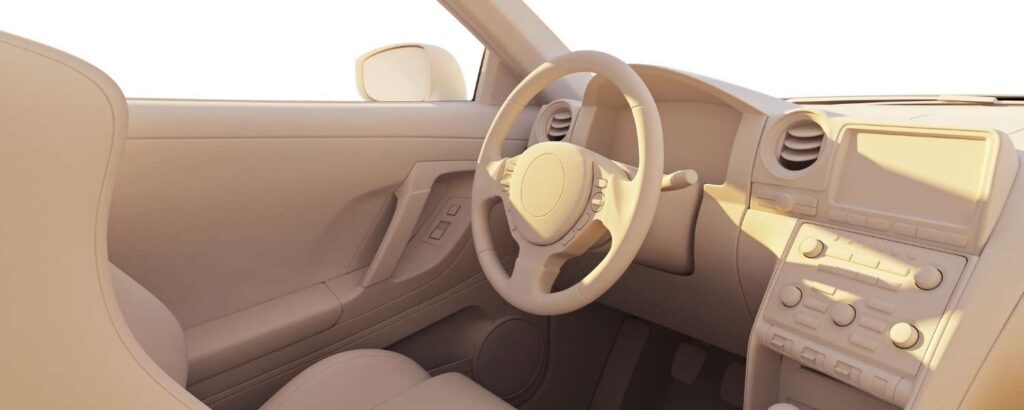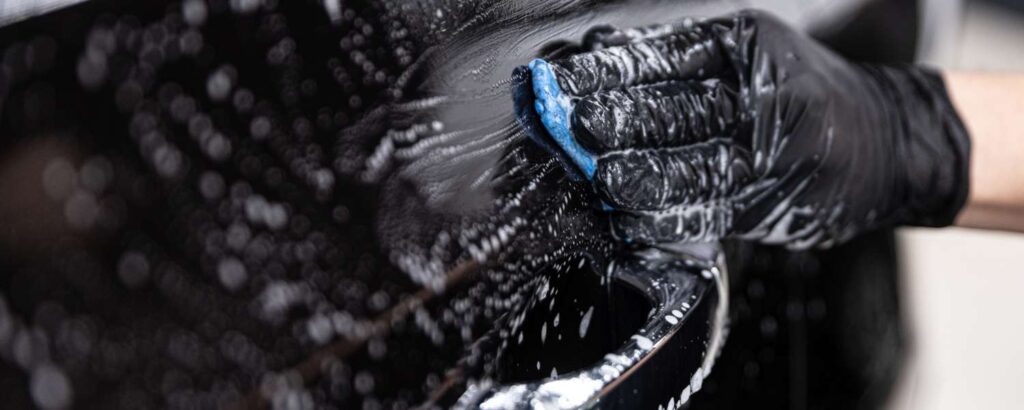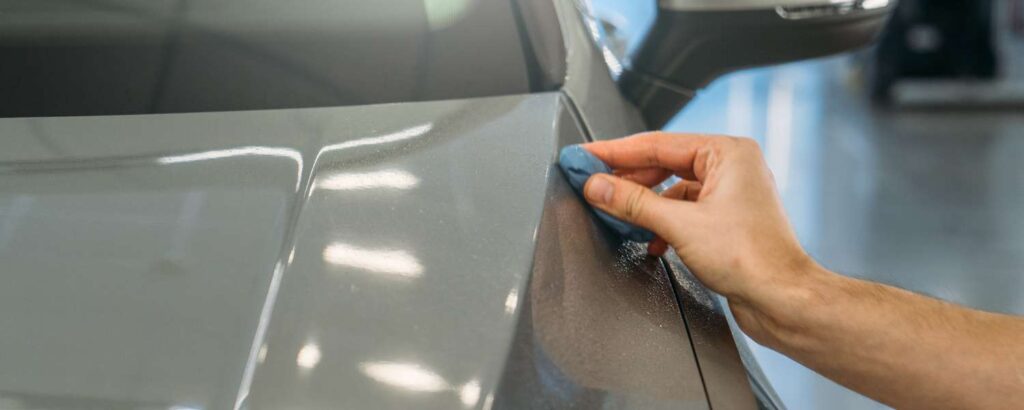Car detailing is a careful way of cleaning and fixing a car’s inside and outside to make it look as good as new and even better. Among the various techniques and tools used in car detailing, the clay bar has gained significant popularity for its unique ability to provide a thorough and smooth cleaning that traditional methods often struggle to achieve. This blog will delve into using a clay bar on a car and its numerous benefits for car detailing, highlighting its role in achieving a flawless finish and preserving a vehicle’s exterior.
What is a clay bar?

A clay bar is a pliable detailing tool used in car care to remove contaminants and debris from a vehicle’s painted surfaces. Composed of a malleable resin compound, the clay bar glides over the paint when lubricated with a special detailing spray. As it makes contact, the clay bar effectively lifts embedded particles such as dirt, road grime, tar, and industrial fallout, leaving the paint surface exceptionally clean and smooth. This process enhances the finish and prepares the paint for further detailing steps like waxing or sealing, resulting in a pristine and polished appearance.
Benefits of using clay bar on car

1. Effective Removal of Contaminants
One of the primary benefits of using a clay bar in car detailing is its ability to remove contaminants that adhere to a vehicle’s paintwork over time. Environmental pollutants, road grime, tar, bug residue, industrial fallout, and other foreign particles can accumulate on a car’s surface, diminishing its shine and causing damage if not addressed promptly. When lubricated with a detailing spray, a clay bar gently lifts and traps these contaminants, leaving the paintwork exceptionally clean and smooth.
2. Restoring Smoothness
As contaminants accumulate on a car’s paint, the surface can become rough and uneven, affecting not only the aesthetics but also the aerodynamics of the vehicle. Using a clay bar for auto detailing helps restore the smoothness of the paint by lifting away embedded particles, resulting in a sleek finish that is not achievable through regular washing alone. A smoother surface also enhances the application and performance of subsequent detailing products, such as wax or sealant.
3. Preventing Paint Damage
Traditional methods of removing contaminants, such as abrasive compounds or rough scrubbing, can lead to micro-scratches or swirl marks on the paint’s surface. A clay bar minimizes the risk of such damage due to its gentle nature. Gliding the clay bar over the lubricated surface significantly reduces the risk of scratching, allowing car enthusiasts and professionals to achieve a clean, blemish-free finish without compromising the paint’s integrity.
4. Enhancing Paint Reflectivity
A well-maintained vehicle boasts a captivating shine that reflects light pleasingly. By thoroughly cleansing the paintwork using a clay bar, the reflective properties of the paint are enhanced, resulting in a deeper and more vibrant appearance. This level of attention to detail is particularly important for those who prioritize the aesthetics of their vehicles, as a high level of paint reflectivity can significantly contribute to the overall visual appeal.
5. Optimizing Detailing Product Performance
Applying protective coatings, like wax or sealant, is integral to car detailing. These products create a barrier shielding paint from environmental contaminants, UV rays, and other elements. Using a clay bar before applying these products ensures the surface is as clean and smooth as possible. This, in turn, maximizes the adhesion and longevity of the protective coatings, allowing them to perform at their best.
6. Saving Time and Money
Using a clay bar may seem like an additional step in the detailing process, but it can save time and money in the long run. The need for more intensive correction methods, such as polishing, is reduced by effectively removing contaminants and preventing paint damage. Additionally, the improved longevity of protective coatings means less frequent reapplication is required, resulting in cost savings over time.
7. Preserving the Value of the Vehicle
Regular detailing, including using a clay bar, is key to maintaining a vehicle’s resale value. A well-maintained exterior enhances the visual appeal and shows that the owner has taken good care of the vehicle. Potential buyers are more likely to pay a premium for a vehicle that looks as close to new as possible, investing in detailing worthwhile.
8. Applicability to Various Surfaces
While the focus of this article has been on a car’s exterior, it’s important to note that clay bars can also be used on other surfaces, such as glass and chrome. This versatility makes them an essential tool for achieving an all-encompassing detailing job that leaves no surface untouched.
Process of using a clay bar

Using a clay bar is crucial in car detailing to achieve a flawlessly smooth and clean surface. This technique involves several key steps:
1. Preparation
Start by thoroughly washing and drying the vehicle to remove loose dirt and grime. This ensures the clay bar doesn’t pick up larger particles that could scratch the paint.
2. Clay Lubrication
Spray a generous amount of detailing lubricant onto a small section of the car’s surface. This lubricant is a barrier between the clay bar and the paint, preventing friction and scratches.
3. Clay Bar Application
Take a small piece of the clay bar and flatten it into a palm-sized shape. Carefully slide the clay bar with a little bit of pressure over lubricated section. As it moves, the clay bar will pick up contaminants, such as embedded dirt and particles.
4. Monitoring
Regularly fold the clay bar to expose a clean section. As you work, you’ll notice the clay bar becoming dirty. This indicates that it’s effectively removing contaminants.
5. Wiping
After treating a section, use a clean microfiber cloth to remove any excess lubricant and residue. Check the surface for smoothness – it should feel notably smoother than before.
6. Repeat
Continue this process section by section, ensuring the entire vehicle’s surface is treated. Be cautious not to press too hard, which can damage the paint.
7. Final Touches
Once the entire vehicle has been clayed, perform a final wipe-down to remove any remaining lubricant or clay residue.
Using a clay bar is an intricate but highly rewarding step, leaving the paint surface incredibly smooth and contaminant-free, providing the ideal canvas for further detailing processes like waxing and sealing.
Conclusion
In the world of car detailing, using a clay bar is an indispensable technique that offers many benefits. From effectively removing contaminants and restoring smoothness to enhancing paint reflectivity and preserving the value of a vehicle, the advantages of incorporating a clay bar into the detailing process are clear.
By combining this technique with other detailing practices, car enthusiasts and professionals alike can achieve a level of finish that elevates the vehicle’s appearance and underscores the importance of meticulous care.
Eco Car Cafe for your clay bar car treatment needs. With our expertise and commitment to eco-friendly practices, you’ll enjoy a meticulous cleaning that preserves your car’s shine while caring for the environment.

